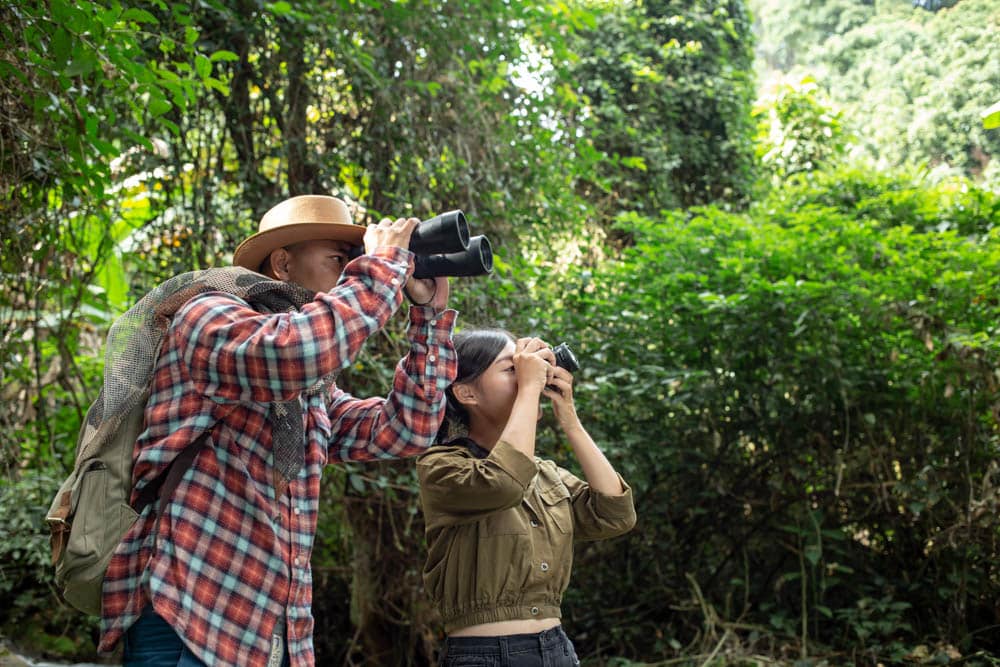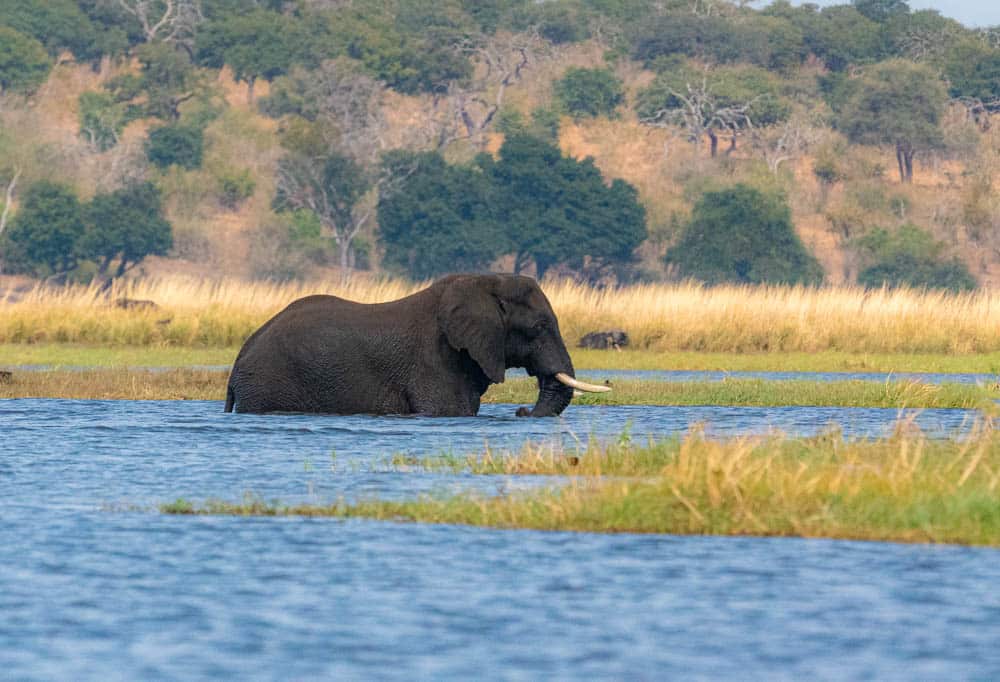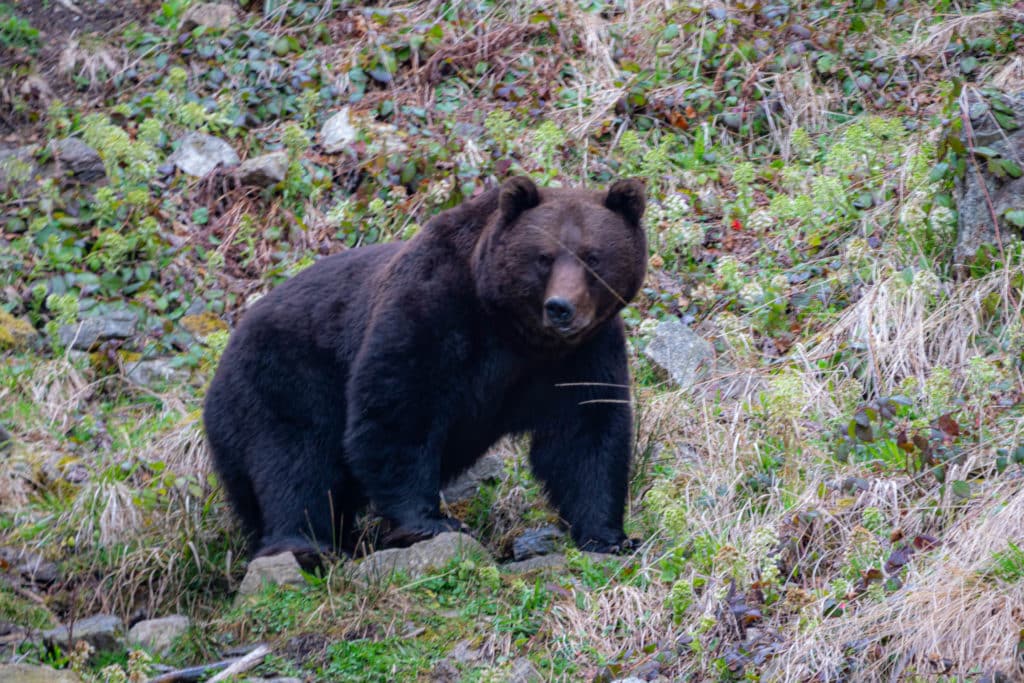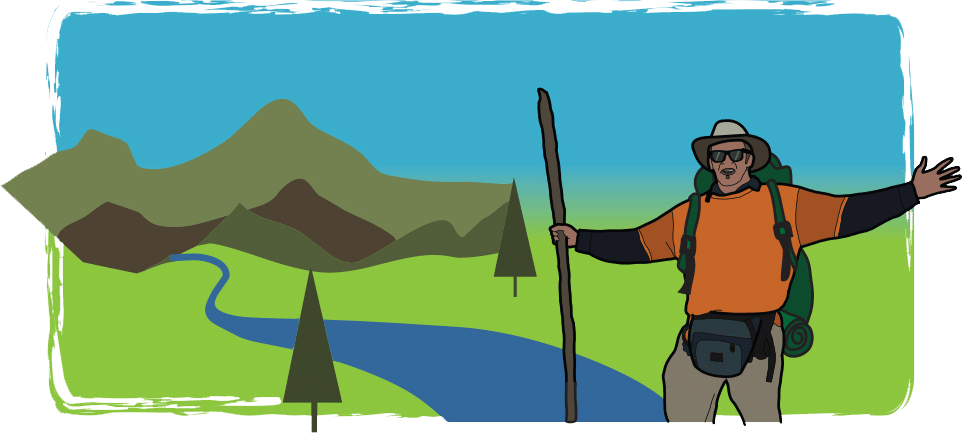Traveling to different countries provides nature and wildlife photographers with opportunities to expand their portfolios with fascinating new subjects. Many countries boast a diverse ecosystem featuring a myriad of plant, flower, and animal species that a lot of photographers haven’t encountered first-hand. As such, when given the chance to photograph the unique flora and fauna of a country you’re visiting, it pays to be prepared to ensure that you can capture the essence of the place’s natural beauty.

A young man and a young woman climbs a telescope to travel and has a happy smile.
Here are some tips to help you take stunning photographs of flora and fauna of another country:
Tips for Photographing Flora
Bring a Good Tripod
When taking photos of the intricate details of plants and flowers, even the slightest movement can result in a blurred image. A tripod ensures that your camera remains steady, enabling you to take crisp, clear shots. Using a tripod also allows for longer exposure times, which is particularly useful in dimly lit environments such as dense forests or during the golden hours of dawn and dusk.
That said, invest in a tripod that suits your camera’s weight and offers adjustable height for various shooting angles. Also, look for features like a ball head or a panoramic head that lets you adjust the composition without moving the entire setup and extendable tripod legs to help maintain balance on uneven terrain. For added stability, use a remote shutter release or the camera’s self-timer function to avoid any movement caused by pressing the shutter button.
Related: BVS Bali photography retreat

Photographing the flora and fauna
Use Macro Lenses to Highlight Water Droplets
A macro lens is your best friend when it comes to extreme ups, revealing textures and patterns that are often overlooked. As such, they’re invaluable for capturing the minute details of plants and flowers, such as water droplets on petals or leaves. Highlighting water droplets can add an element of freshness and vitality to your photos, making them more visually appealing. If you don’t have a macro lens on hand, you can always rent a lens from a trusted camera rental shop.
To make the most of a macro lens, get as close to the subject as possible while maintaining sharp focus. You should also aim for a clean, contrasting background to make the water droplets stand out. The best time to take photos of water droplets on plants is in the early mornings, as dew naturally forms on plants and the light is flattering. However, if you’re pressed for time, you can carry a small spray bottle to create artificial droplets.

Photographing the flora and fauna – Beautiful elephant crossing the Chobe River
Use Soft Light When Taking Photos of Flowers and Plants
Harsh sunlight can create strong shadows and highlights, which can be unflattering and obscure the delicate details of flora. Soft light, on the other hand, provides even illumination, enhancing the colours and textures of your subjects without harsh contrasts. With this in mind, it’s best to schedule your photography sessions during times of the day when the light is naturally diffused, such as early morning and late afternoon. If you must shoot in bright sunlight, create your own soft light by using a diffuser or a piece of white cloth to filter the light. Position yourself so that the light falls gently on the subject, avoiding direct sunlight that can cause overexposure.
Tips for Photographing Fauna
Research Your Subject
Understanding the behavior, habitat, and patterns of the animals you wish to photograph allows you to anticipate their movements and plan your shots accordingly. This knowledge can make the difference between a mediocre photo and an exceptional one, as it enables you to be in the right place at the right time.
Start by reading books, articles, and online resources about the species you plan to take pictures of. Take note of their active times, feeding habits, and mating seasons. Joining wildlife forums or groups can also provide valuable insights from other photographers who have experience with the same species. Additionally, watching documentaries or observing the animals in their natural habitat prior to your photography session can help you better understand their behavior.

Photographing the flora and fauna – Adult male Eurasian brown bear
Keep Your Shutter Speed Appropriately Fast
A fast shutter speed is essential when photographing fauna, as it allows you to freeze motion and capture sharp images of animals in action. Whether it’s a flying bird, a running mammal, or a fluttering insect, a high shutter speed ensures that your photos are crisp, clear, and highlights the details and dynamism of your subject. To keep your shutter speed appropriately fast, set your camera to shutter priority mode or manual mode. Aim for a shutter speed of at least 1/1000th of a second for fast-moving subjects. Then, adjust the ISO and aperture to compensate for the increased shutter speed and ensure proper exposure. In low-light conditions, you may need to increase the ISO or use a wider aperture to maintain a fast shutter speed. Utilising burst mode is another way to help capture multiple frames in quick succession, thereby increasing your chances of getting the perfect shot.
Get Wet Weather Gear for You and Your Equipment
Photographing fauna often requires spending time in unpredictable and sometimes harsh weather conditions. Rain, humidity, and water bodies can present challenges but with proper preparation, you can still achieve great photos. Having the right wet weather gear for both you and your equipment is vital so you can continue shooting without damaging your gear or compromising your comfort.
Invest in a high-quality, waterproof camera bag to protect your gear from moisture. Use rain covers or waterproof housing for your camera and lenses to shield them from rain and splashes. Consider carrying a microfiber cloth as well to wipe away water droplets from your lens and equipment. Additionally, using a lens hood can help prevent raindrops from hitting the front element of your lens. For personal comfort, wear waterproof clothing, including a rain jacket, trousers, and sturdy boots.
Photographing the flora and fauna of another country can be a deeply rewarding experience. However, this experience is not without its challenges. With the help of these tips, you can capture the unique beauty and diversity of nature, and produce stunning images of your subjects.
Adventure on!









Great photography tips for photographing plant and animals on your travel.